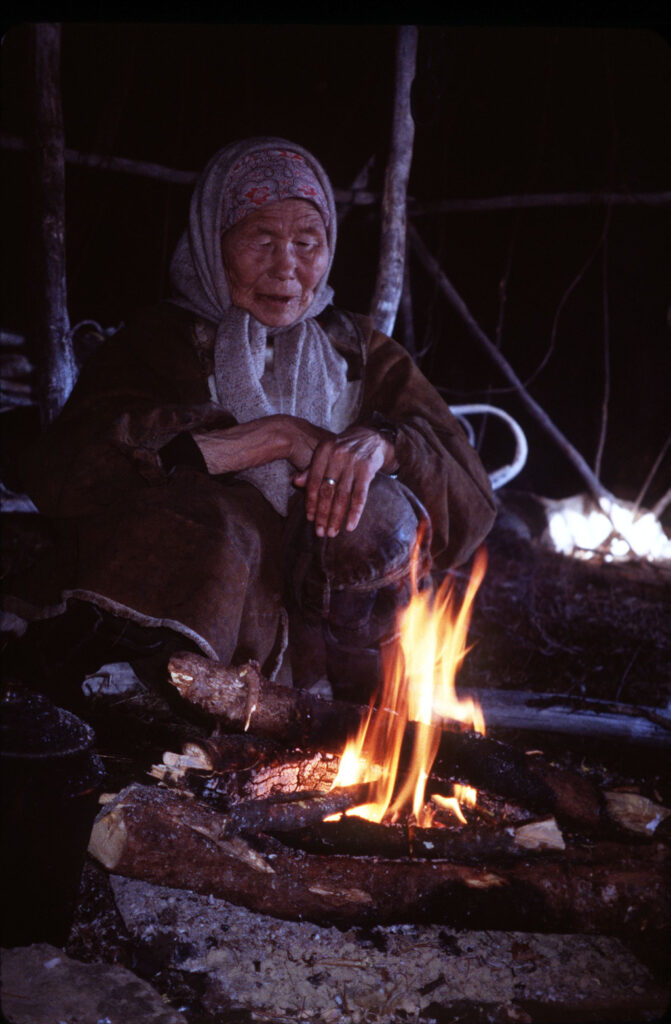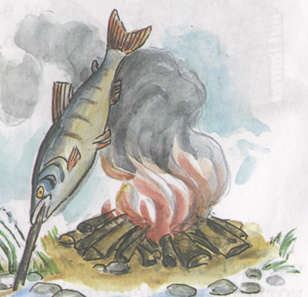Koryaks составляют одно из этнических подразделений северо-восточных палеоазиатов, этногенетические корни которых уходят в глубокую древность. Согласно археологическим материалам человек появился здесь около 30 тыс. лет назад, однако, первые человеческие сообщества, с существованием которых в той или иной степени можно реально связывать начальные этапы этногенеза северо-восточных палеоазиатов, сложились только в мезолитическую эпоху. Это были немногочисленные коллективы бродячих охотников и рыболовов, проникших на северо-восток из глубинных районов Азии. В антропологическом отношении они представляли собой так называемых недифференцированных монголоидов со слабо выраженными монголоидными чертами. Как показывают данные молекулярной антропологии, коряки являются их потомками. К мезолитической охотничье-рыболовецкой культуре древних монголоидов восходят, по-видимому, и характерные для северо-восточных палеоазиатов элементы материальной и духовной культуры: способы добывания огня, консервации мяса и рыбы, промысловый культ умирающего и воскресающего зверя, костяные и каменные орудия, бытовавшие на северо-востоке в XVII в. и др.
Безусловно, этнической дифференциации палеоазиатов северо-востока на этом этапе их истории еще не произошло. Формирование специфических черт, характерных для коряков, происходит значительно позже, когда в северной части Тихого океана начинают формироваться местные культуры. Одна из них, токаревская, ставшая известной лишь в последние годы, возникла в середине II тысячелетия до н. э. в северном Приохотье. В ее формировании участвовали континентальные племена, вышедшие на побережье, а также древние культуры Приамурья, Приморья и Прибайкалья. Экономика токаревской культуры имела континентально-приморскую направленность: сухопутная охота дополнялась промыслом морских животных и рыболовством. Специализированные орудия морского промысла появляются со второй половины I тыс. до н. э. под влиянием более развитых зверобойных культур северо-востока — древнеэскимосской, древнекерекской, тарьинской. В этническом плане носители токаревской культуры, судя по всему, представляли собой две родственные группы — предков «пеших тунгусов», которых застали русские на Охотском побережье в XVII в. и палеокоряков. Располагаясь между северными и южными культурами тихоокеанского побережья, древние коряки воспринимали от них хозяйственные традиции, различные элементы материальной и духовной культуры, происходила постепенная адаптация неолитических охотников к новым хозяйственным занятиям, вырабатывались соответствующие навыки оседлой жизни. К середине I тыс. до н. э. этот переходный период в основном завершился. В северной части Охотского моря получает развитие новая древнекорякская культура. В отличие от токаревской ее экономика имеет уже четкую ориентацию на морской зверобойный промысел и приморское собирательство. Наблюдается постепенное продвижение древних коряков вглубь Камчатки. Примерно к X в. н. э. они оказываются непосредственными соседями ительменов.
Переход к морскому зверобойному промыслу и оседлости способствовал обособлению отдельных групп древних коряков. В этот период происходит дробление древнекорякского языка на диалекты, становление специфических черт береговых коряков, их современного физического облика. Заключительный этап этногенеза коряков — формирование оленных групп чавчувенов. Приобщение к оленеводству произошло у коряков сравнительно поздно — предположительно в XXI—XVI вв. в результате заимствования отдельными группами оседлых зверобоев оленеводства у тунгусов. Произошло это, скорее всего, в районе Пенжинской губы, а также на восточном побережье Камчатского полуострова, примыкающем к Чукотке. Об этом, в частности, может свидетельствовать близость диалектов оленных коряков и чукчей с пенжинскими и апукинскими береговыми коряками. Первоначально оленеводство лишь дополняло уже сложившийся хозяйственный комплекс прибрежных жителей, позднее, по мере продвижения оленных охотников на север, оно трансформировалось в специализированное пастбищное оленеводство. Переход части береговых жителей к новому занятию вызвал значительные изменения в культурном облике этноса, происходит окончательное формирование корякской народности, какой и застали ее русские люди.
Первые упоминания о коряках в русских документах относятся к 30-40 гг. XVII в. Несколько десятилетий контакты с ними были весьма эпизодическими, однако уже тогда казаки хорошо осознавали этническую и хозяйственную пестроту коряков. Из общей среды четко выделялись две культурно-хозяйственные группы: береговые (нымыланы) и оленеводы (чавчувены). Общая численность коряков в конце XVII в. составляла примерно 10-11 тыс. человек, в том числе чавчувенов — 2,5 тыс. Стойбища оленеводов тянулись на некотором удалении от берега вдоль Охотского моря от р. Олы до р. Тигиля на западном побережье Камчатки, на восточном — от р. Апуки до р. Панкариной. Несмотря на огромную разбросанность, все оленеводы прочно сохраняли культурно-бытовое и языковое единство.
Literature
- История и культура коряков. Под общей редакцией академика А.Н. Крушанова. Санкт-Петербург. «Наука». 1993. с.3-8
- В.И. Иохельсон. Коряки. Материальная культура и социальная организация. Санкт-Петербург. «Наука». 1997. с.19-26





